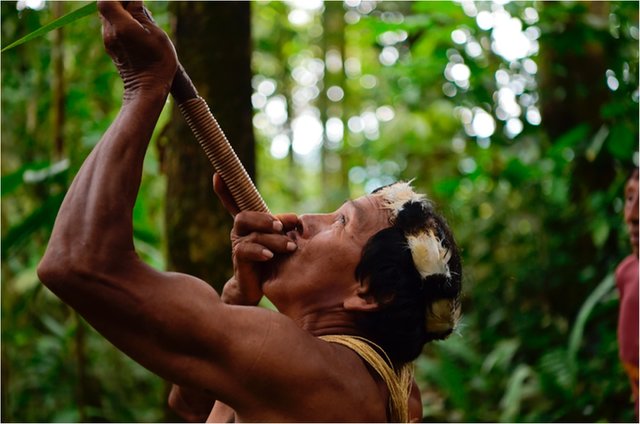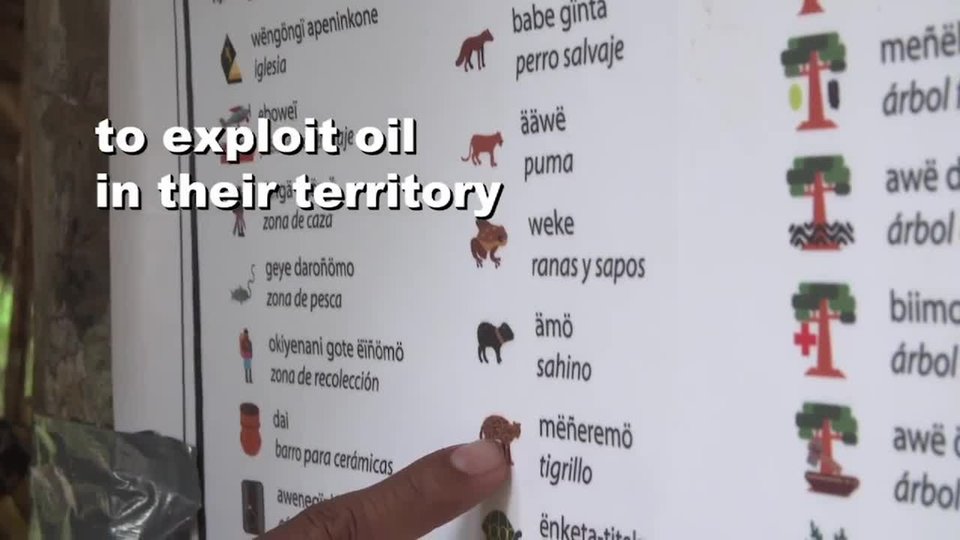

Waoranipeopletravelingbycanoeona river


DrillingDown
In2012,thegovernmentofEcuadorwantedtooffernewdrillingrightstooilcompanies.ThedrillingareaincludedWaoranilands.Bylaw,thegovernmenthadtoexplainthistothe Waorani.
Governmentrepresentativesflewintotherainforest.Theyheldshort,rushedmeetings.ManyWaoranididnothaveenoughtimetogetthere.Fewunderstoodthelanguagebeing used.
Later,theWaoranilearnedthatthegovernmenthaddividedupalargesectionoftheAmazonfordrilling.TheWaoranisectionwasnumber 22.Theyneededtodefendtheir land.
ALeaderforHerPeople
NemonteNenquimowasbornandraisedintheWaoraniculture.Earlyinherchildhood,herfamilymovedtoacommunitydeepinthe rainforest.

aWaoranicommunity gathering

ThisWaoranielderusesablowpipeanddartsfor hunting.

Nenquimo’sgrandfather,Piyemo,wasarespectedwarrior.Hebelievedthattherainforestshouldbeprotected.Fromhim,Nenquimolearnedthatthelandmustbedefendedagainst threats.
NenquimoalsolearnedfromWaoraniwomen.Theyhavealwaysbeenthecaretakersoftheforest.Theywatchovertheplantsandanimalsandtellthemenwheretohuntandforwhich animals.
In2015,NenquimohelpedleadtheWaoraniinaprojecttomaptheirancestrallands.Eldersandyoungpeopleworkedtogether.Theymappedthesacredwaterways,animalbreedingsites,andfruittreegroves.TheyusedtraditionaldrawingsaswellasGPSand cameras.
Later,thesemapswouldbeusedtoshowthedeeprelationshiptheWaoranihavetotheir land.

Surroundedbyherpeople,Nenquimospeakstoreportersaboutthecourt case.
Nenquimoandfourotherwomenwereelectedtoleadthelawsuit.ItarguedthatthegovernmenthadnotgottenthefreeagreementoftheWaorani.Thiswasrequiredby law.

